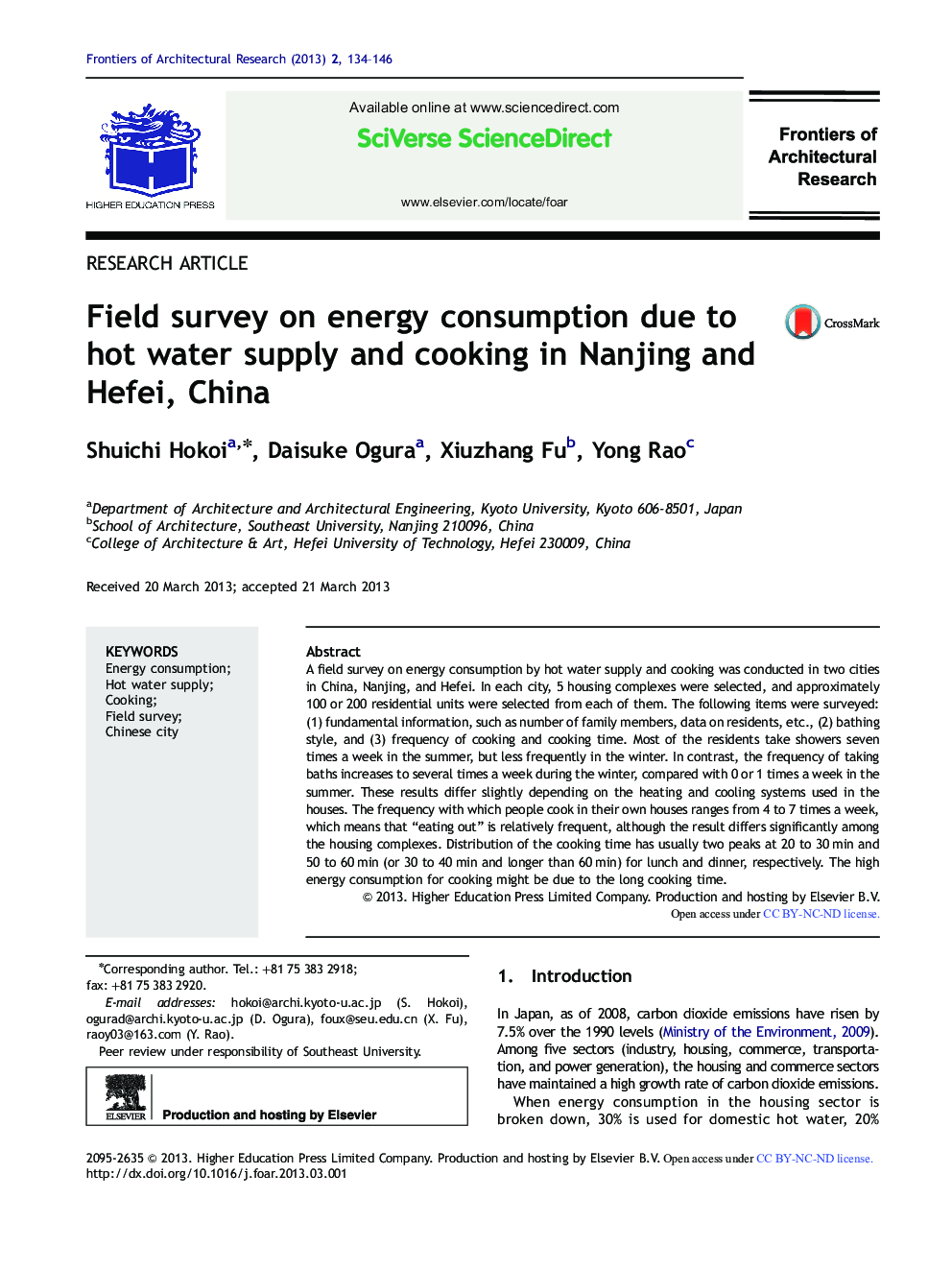| Article ID | Journal | Published Year | Pages | File Type |
|---|---|---|---|---|
| 270753 | Frontiers of Architectural Research | 2013 | 13 Pages |
A field survey on energy consumption by hot water supply and cooking was conducted in two cities in China, Nanjing, and Hefei. In each city, 5 housing complexes were selected, and approximately 100 or 200 residential units were selected from each of them. The following items were surveyed: (1) fundamental information, such as number of family members, data on residents, etc., (2) bathing style, and (3) frequency of cooking and cooking time. Most of the residents take showers seven times a week in the summer, but less frequently in the winter. In contrast, the frequency of taking baths increases to several times a week during the winter, compared with 0 or 1 times a week in the summer. These results differ slightly depending on the heating and cooling systems used in the houses. The frequency with which people cook in their own houses ranges from 4 to 7 times a week, which means that “eating out” is relatively frequent, although the result differs significantly among the housing complexes. Distribution of the cooking time has usually two peaks at 20 to 30 min and 50 to 60 min (or 30 to 40 min and longer than 60 min) for lunch and dinner, respectively. The high energy consumption for cooking might be due to the long cooking time.
